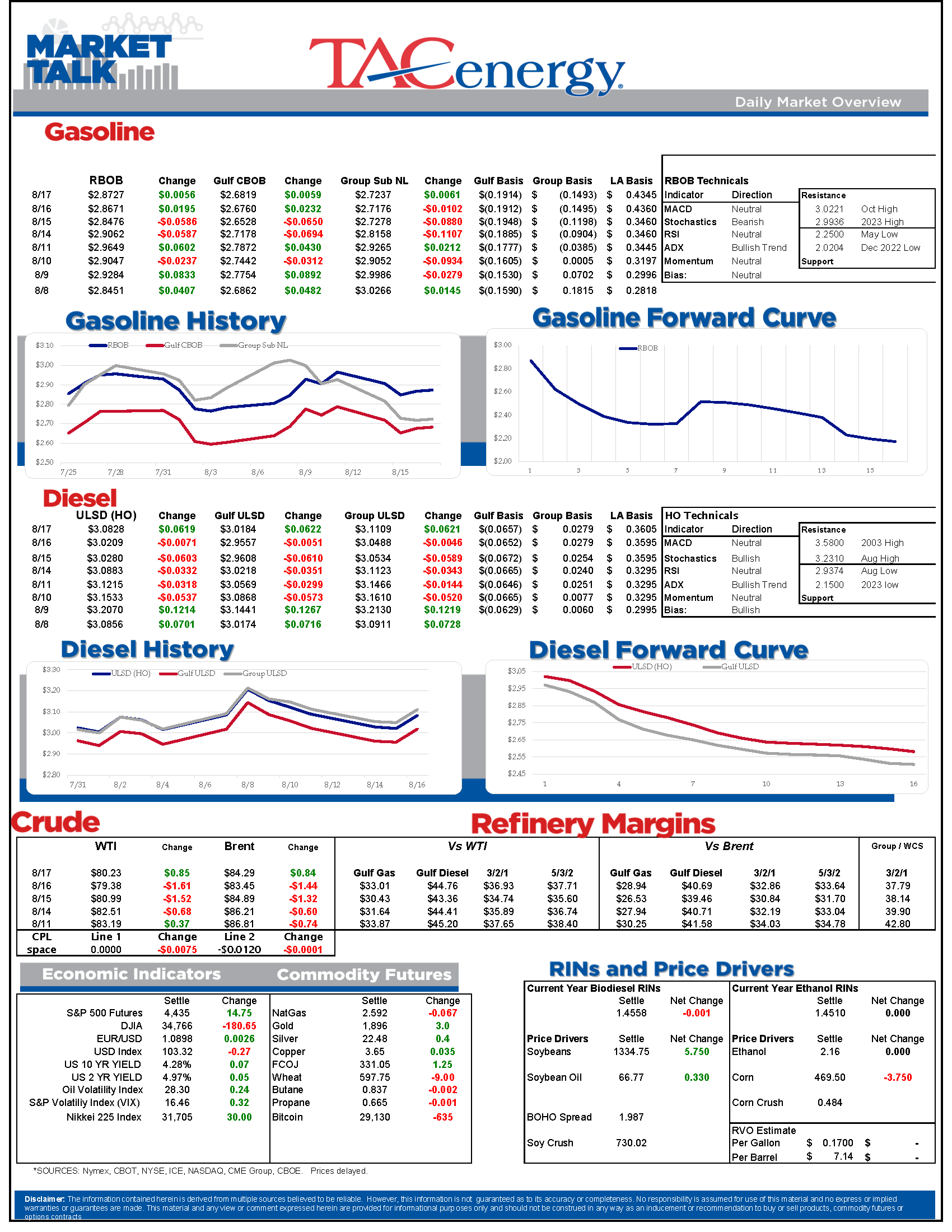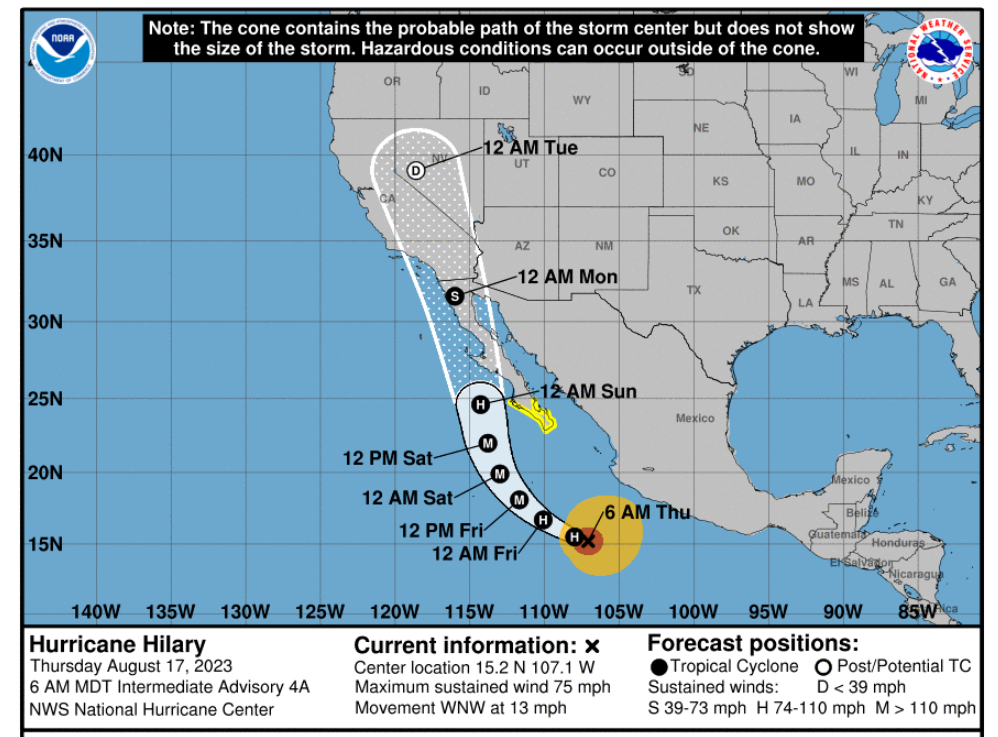Diesel Prices Rally on Technicals, Tight Inventories

We’re seeing another reversal Thursday with ULSD prices rallying 6 cents in the early going after dropping more than 20 cents in the past week. The bounce seems to be driven more by technicals than fundamentals after prices held support just north of the $3 mark Wednesday, although tight inventories could also be playing a role. WTI is also seeing a bounce after its biggest weekly sell off in 4-months and is currently holding just above the $80 mark while gasoline prices are struggling to keep pace so far.
US oil output ticked up to 12.7 million barrels/day last week, reaching the highest mark since the start of the pandemic forced a rapid shutdown of many wells, and keeping the country on pace to set a record for annual production this year. The increasing output despite the consistent drop in drilling rigs is yet another testament to the ingenuity of the industry to continue leading through technological advancement, despite many concerns that legacy well rates are due to drop off. This increase in output is also a result of the shift to more off-shore drilling (which has higher output per well than on-shore fracking) over the past 2 years as the world has come to the realization that oil demand isn’t going away for a very long time.
Gasoline inventories remain well below average across the country, with all 5 PADDs holding below their 5-year seasonal average. The East and West Coasts (PADDs 1 & 5) are both hovering at the bottom of their 5-year range leaving them in a precarious position until we get past the fall RVP transition.
The Midwest (PADD 2) remains the only region in the country with diesel inventories that are at or above average for this time of year, while all others are running near the low end of their 5-year range. West Coast diesel inventories (and by extension the total US diesel demand estimate) are showing an artificially low number since the DOE’s survey still does not have a place to report weekly stats on renewable diesel.
Refiners seem to be doing everything they can to keep up with the low domestic inventories and steady export demand, with throughput rates remaining above average despite the drop in capacity over the past few years. We are seeing numerous small disruptions keeping several plants from reaching max output, and the concern is that we could soon see more disruptions with several fall turnarounds and the peak of hurricane season just a few weeks away.
California doesn’t get hit by hurricanes and has only had 3 tropical storms make landfall in recorded history, but we might get a 4th early next week. Hurricane Hilary formed off the Mexican coast yesterday and is expected to rapidly intensify into a category 4 storm by Friday, before losing steam rapidly as it approaches land. Yesterday the forecast path had the storm making landfall as a tropical storm near LA. This morning the center of the forecast cone has landfall happening in Mexico. Wherever it hits, the system is expected to bring heavy rains to California, Arizona and Nevada and we can’t yet rule out more disruptions to LA-area refineries. In other words, Hilary is scaring lots of people but looks like she’ll fall apart rapidly just in the nick to time to prevent too much damage from being done to our country. Sounds familiar.
In the Atlantic basin all 3 systems being tracked by the NHC have improving odds of development today. The two storms over the open Atlantic are both given 60% odds of being named this week, but both look like they should be moving north just enough to prevent a threat to the US, while the system in the Gulf of Mexico is given 30% odds of becoming a named storm next week.
News & Views
View All
Energy Futures Are Caught Up In Headline Tug-O-War This Morning
Energy futures are caught up in headline tug-o-war this morning with Canadian oil production concerns and a positive US GDP report trying to push prices higher while sinking Chinese demand worries and Gaza ceasefire hopes are applying downward pressure. The latter two seem to be favored more so far this morning with WTI and Brent crude oil futures down ~45 cents per barrel, while gasoline and diesel prices are down about half a cent and two cents, respectively.
No news is good news? Chicago gasoline prices dropped nearly 30 cents yesterday, despite there not being any update on Exxon’s Joliet refinery after further damage was discovered Wednesday. Its tough to say if traders have realized the supply situation isn’t as bad as originally thought or if this historically volatile market is just being itself (aka ‘Chicago being Chicago’).
The rain isn’t letting up along the Texas Gulf Coast today and is forecasted to carry on through the weekend. While much of the greater Houston area is under flood watch, only two refineries are within the (more serious) flood warning area: Marathon’s Galveston Bay and Valero’s Texas City refineries. However, notification that more work is needed at Phillip’s 66 Borger refinery (up in the panhandle) is the only filing we’ve seen come through the TECQ, so far.
Premiums over the tariff on Colonial’s Line 1 (aka linespace value) returned to zero yesterday, and actually traded in the negatives, after its extended run of positive values atypical of this time of year. Line 1’s counterpart, Line 2, which carries distillates from Houston to Greensboro NC, has traded at a discount so far this year, due to the healthy, if not over-, supply of diesel along the eastern seaboard.
Click here to download a PDF of today's TACenergy Market Talk.

WTI And Brent Crude Oil Futures Are Trading ~$1.50 Per Barrel Lower In Pre-Market Trading
The across-the-board drawdown in national energy stockpiles, as reported by the Department of Energy yesterday, stoked bullish sentiment Wednesday and prompt month gasoline, diesel, and crude oil futures published gains on the day. Those gains are being given back this morning.
The surprise rate cut by the People’s Bank of China is being blamed for the selling we are seeing in energy markets this morning. While the interest rate drop in both short- and medium-term loans won’t likely affect energy prices outright, the concern lies in the overall economic health of the world’s second largest economy and crude oil consumer. Prompt month WTI and Brent crude oil futures are trading ~$1.50 per barrel lower in pre-market trading, gasoline and diesel are following suit, shaving off .0400-.0450 per gallon.
Chicagoland RBOB has maintained its 60-cent premium over New York prices through this morning and shows no sign of coming down any time soon. Quite the opposite in fact: the storm damage, which knocked Exxon Mobil’s Joliet refinery offline on 7/15, seems to be more extensive than initially thought, potentially extending the repair time and pushing back the expected return date.
There are three main refineries that feed the Chicago market, the impact from one of them shutting down abruptly can be seen in the charts derived from aforementioned data published by the DOE. Refinery throughput in PADD 2 dropped 183,000 barrels per day, driving gasoline stockpiles in the area down to a new 5-year seasonal low.
While it seems all is quiet on the Atlantic front (for now), America’s Refineryland is forecasted to receive non-stop rain and thunderstorms for the next four days. While it may not be as dramatic as a hurricane, flooding and power outages can shut down refineries, and cities for that matter, all the same, as we learned from Beryl.



